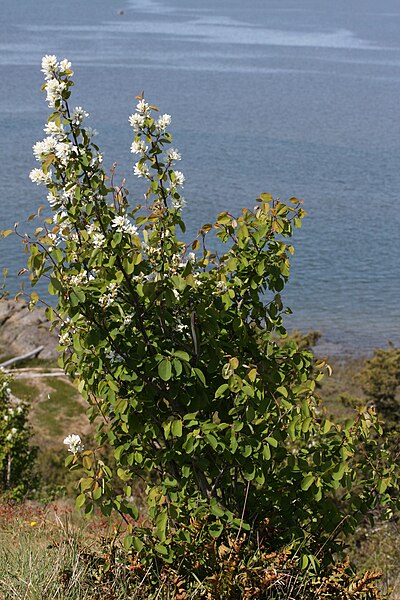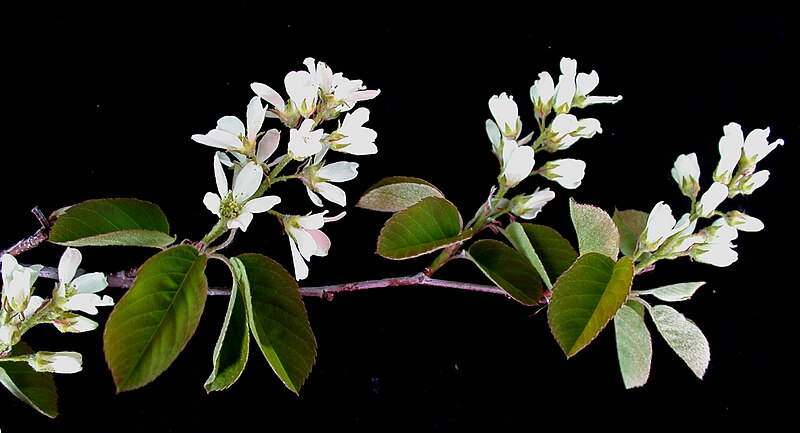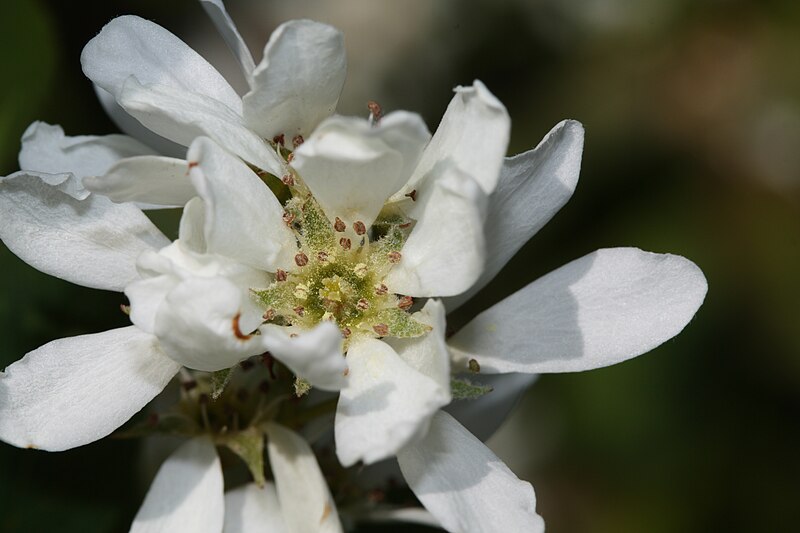Saskatoon Berry Identification – Amelanchier alnifolia
Heads up
Saskatoon Berry, scientifically known as Amelanchier alnifolia, is part of the Rosaceae family, which houses many of our favorite fruit trees, including apples, cherries, and pears. Besides Saskatoon Berry, this plant is often called Juneberry or Saskatoon Serviceberry. “Juneberry” suggests the month it typically bears fruit.
This berry plant thrives in Western and Central North America. Being a low-maintenance plant with medium growth speed, it’s an attractive choice for many gardeners. Plus, with its ability to provide cover and food, it’s also a favorite among wildlife like birds, bees, butterflies, and small mammals.
Saskatoon Berry: Key Parts in Photos





How to identify Saskatoon Berry
The Saskatoon Serviceberry is a deciduous shrub. Though some can stretch up to 30 feet tall, they mostly range between 3 to 18 feet. If you’re looking for a sign of its presence in early spring, keep an eye out for its small white flowers, which emerge before its leaves. These blossoms not only have a pleasant fragrance but can also stay blooming for nearly a month.
The leaves of this shrub are oval or almost circular. They have toothed edges, especially towards the top. The leaves show off a light green hue, which transforms into a blend of red and yellow during fall, remaining vivid for a longer time than many other plants. If you closely inspect these leaves, you’d find the underside with a soft, gray, hairy texture.
Its flowers, which are white and star-shaped, show up in compact clusters. Each flower measures between 1-3 inches and appears in racemes, where flowers are positioned along the main stem, with the oldest flowers at the base and the youngest at the top.
Post the flowering season, the Saskatoon Serviceberry bears fruits. These berries, which are around 1/2 inches in size, have a resemblance to blueberries and bear a waxy bloom. By early summer, these fruits ripen into a delightful bluish-purple color. These aren’t just for show – they’re sweet, and edible.
Want to learn more?

Disclosure: This post includes affiliate links. If you make a purchase through these links, we may earn a commission at no extra cost to you. We appreciate your support, as it helps keep this website running. Alternatively, you can search for the book title on Amazon if you prefer not to use the links. Thank you for your understanding and support!
